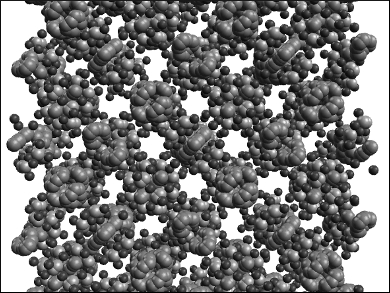Graphite is a common electrode material and can store, e.g., lithium ions. However, storage capacity on its surfaces is limited due to the sheet structure. Porous carbon is a promising alternative with higher specific surface areas and faster ion transport.
Maksym V. Kovalenko, Swiss Federal Institute of Technology (ETH) Zurich, and Swiss Federal Laboratories for Materials Science & Technology, Dübendorf, Switzerland, and colleagues have synthesized a porous carbon electrode material using a zeolite as the template. The team impregnated the zeolite NaY with furfuryl alcohol and propylene as carbon precursors and heat-treated the samples at 900 °C. The zeolite was removed with hydrofluoric acid to obtain the zeolite-templated carbon (ZTC) product.
The researchers tested the material as a cathode in an aluminum battery with metallic aluminum as the anode and an ionic liquid chloroaluminate as the electrolyte. The ZTC electrode lead to an improved energy storage capacity compared with an analogous graphite electrode, and showed high cycling stability over hundreds of cycles. According to the team, this improvement is caused by the larger surface area and the homogenous network of channels in the material.
- Zeolite-Templated Carbon as an Ordered Microporous Electrode for Aluminum Batteries,
Nicholas P. Stadie, Shutao Wang, Kostiantyn V. Kravchyk, Maksym V. Kovalenko,
ACS Nano 2017.
DOI: 10.1021/acsnano.6b07995
Also of Interest
- Werner Prize 2016,
ChemViews Mag. 2016.
Nanomaterials researcher Maksym Kovalenko honored by Swiss Chemical Society


